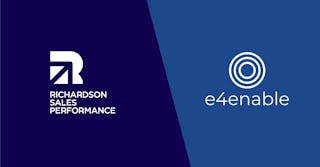Four Essential Factors for Building Trust with Sophisticated Buyers, Part 1 of 2

Here’s something I’ve learned about sales professionals in the years I’ve been leading training programs: they’re avid learners in hot pursuit of excellence.
And for the best of the best, “excellence” is determined not by numbers, but by the difference they make. Use this four-part checklist to gain insight into ways to raise your game.
Do the Math
In this day and age, there are very, very few who dispute the importance of building trust in the sales process.
While trust-based selling is far from formulaic, it helps to approach it with a formula in your back pocket. That’s where the trust equation comes in.
David Maister, Charlie Green, and Rob Galford first wrote about the trust equation in The Trusted Advisor in 2000. Eleven years later, Charlie and I reprized it in The Trusted Advisor Fieldbook. It’s proven to be a perennial favorite.
One reason for the trust equation’s popularity is that it has many uses. As a conceptual framework, it demystifies what it really takes to be trustworthy. It can also be used in a more specific way to “score” a particular person (you) or a particular relationship (yours with a client). The key to getting the best use out of it is to understand the distinctions between each of its four variables, along with the direct impact of each on your sales success.
I’ve described each of the four variables below from most to least provocative. Here’s the critical question: How do you fare on each one?
Get Off Your “S”
We know him from a mile away: the stereotypical used car salesman who’s all about him. I doubt there’s a single person reading this blog who falls into that category because you wouldn’t be interested in the kind of content that’s posted here. That said, I bet there are a lot of readers who succumb to the self-orientation trap, as the trust equation defines it. I say that because we all do at one time or another, and more often than we realize.
Self-orientation is essentially about your focus—is it directed at you or your clients? It lives in the denominator of the trust equation; therefore it’s the only one we want to be small, as it is natural when you’re focused on others.
For most of us, self-orientation expands in subtle and sneaky ways, such as when the high achievers among us succumb to “premature solutions,” or when those who prefer to be in control begin to steer a conversation towards our own agenda, or when our desire to be liked interferes with our willingness to have tough conversations. Generally speaking, as our discomfort and anxiety increases, our “S” gets bigger and bigger.
And if these shoes don’t fit you, take this litmus test: are you willing to refer your client to a competitor when you know the competitor will do a better job? If the answer is “no,” or “it depends,” that’s high self-orientation in the works. It’s also a failure to embrace a critical paradox of sales, by the way, which is this: the best way to close more deals is to stop trying to close more deals and instead get relentlessly focused helping your client make the best decision for her right now.
(And now you see why I said self-orientation is the most provocative variable for salespeople.)
If you’re looking to transform your relationships with your clients, and your sales results in the process, then get off your “S.”
Go Soft
I work with a lot of professional services people who don’t see themselves as salespeople and they almost universally assume the following about those who are: “They’re great at the ‘soft stuff.’ They have to be.”
Sadly, I’m not at all sure that’s true.
If my direct experience is any indication, salespeople don’t score any higher on the next most provocative variable of the trust equation, which is intimacy. And that’s not because I’m leading remedial programs for the mediocre (in fact, it’s usually the opposite). I believe it’s because so many of us in business are taught, either directly or indirectly, to eschew anything that seems touchy-feely.
Intimacy is about safety and your ability to form and maintain relationships that are comfortable and secure for others. A trusted advisor (and an exceptional salesperson, which I’d argue are one in the same) is a safe haven for tough issues. So then intimacy is yeast to leavened bread: a have-to-have, not a nice-to-have.
There are many pathways to intimacy. Time on the golf course with a client is only one of dozens of options, and not necessarily your best one. Other possibilities include listening deeply and with a real demonstration of empathy, sharing something personal about yourself, asking questions others would be afraid to ask (in a respectful and appropriate way, of course), and telling your client something you really appreciate about her—just to name a few.
If you’re not getting called in by your clients as early or as often as you’d like, do the work that’s required to go soft.
Stay tuned for the second of this two-part post where we will cover the remaining two variables, each with its own twist: “C” (credibility) and “R” (reliability).
This is the first of a two-part guest post written by Andrea Howe, co-author of “The Trusted Advisor Field Book” and creator of The Get Real Project.About Andrea P. Howe
Andrea P. Howe is the co-author, with Charles H. Green, of The Trusted Advisor Fieldbook: A Comprehensive Toolkit for Leading with Trust. She is the creator of The Get Real Project and also a lead consultant for Trusted Advisor Associates.
A veteran consultant, seminar leader and speaker, Howe specializes in serving global professional services firms. She addresses strategic topics such as customer intimacy, client loyalty, the dynamics of influence, dealing with conflict, and developing business with trust.
Described by her clients as pragmatic and engaging, Howe shares with her audiences a rich and diverse toolkit to increase trustworthiness in any stakeholder relationship.

Consultative Selling Training Program Brochure
Learn about building the foundational selling skills needed to improve the performance of your entire team.
DownloadGet industry insights and stay up to date, subscribe to our newsletter.
Joining our community gives you access to weekly thought leadership to help guide your planning for a training initiative, inform your sales strategy, and most importantly, improve your team's performance.






